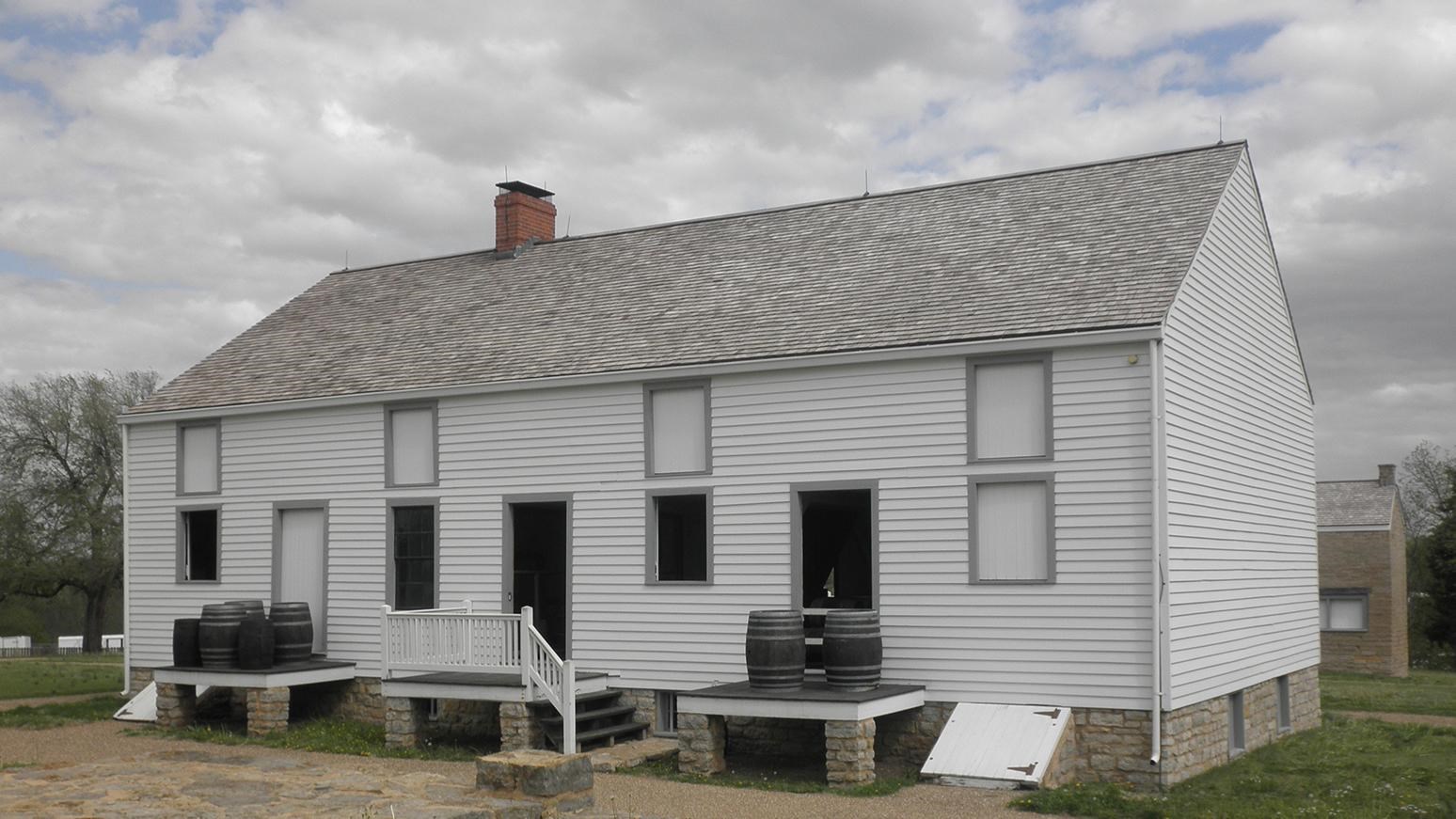Last updated: July 14, 2021
Place
Quartermaster Storehouse

NPS Photo
Historical/Interpretive Information/Exhibits
"The line of supply may be said to be as vital to the existence of an army as the heart to the life of a human being" This quote from a military commander emphasizes the critical role that the quartermaster and subsistence departments played in the army's well being and survival.
In this building are housed the barrels and boxes that contained these important supplies. One side is set up as the quartermaster's office and storeroom. As the name implies, the quartermaster was in charge of providing the army with quarters or buildings in which to live. In the quartermaster storeroom are nails, paint, and other materials used in the construction and maintenance of the buildings, supplies that ultimately provided comfort to the soldiers.
The commissary or subsistence officer ran the other side of the building. He used it to store food rations and other supplies vital to the soldiers' survival. Dry goods such as flour and bacon were stored in barrels and boxes, while goods that needed a cooler environment, candles and soap, for example, were stored in the downstairs basement.
Strict accountability governed the management of these supplies. Supplies were regularly inventoried. Paperwork accompanied the issuance of these supplies. Even items that were spoiled could not just be thrown out; a board of survey had to declare them unfit for consumption and order their disposal.
Quartermaster Office
The quartermaster, assisted by a sergeant, managed the affairs of his department in this office. All of the paperwork to order supplies was generated here: careful records of inventory were also maintained. Proper forms had to be filled it and quartermasters were held strictly accountable. He conducted all the inventory even down to the last nail. Nothing could be added or removed without his approval. If something went astray, that responsibility fell on to the quartermaster himself.
Issue Room
From the issue room, the army issued rations, uniforms, and tools. Soldiers would check out and return tools daily. Fatigue uniforms were issued once a year; dress uniforms were replace d every 3 years. There was a partition in the wall to separate this room from the commissary room, in order to prevent soldiers from pilfering goods as they came by.
Commissary and Quartermaster Storerooms
The largest rooms in the building were designed for the commissary and quartermaster storerooms. . Normally these rooms were in separate buildings at larger posts, but at Fort Scott, both of these were combined into the same building. Wagons would bring coffee, sugar, salt, molasses, flour, bacon, salted pork/salted beef, whiskey, vinegar, candles, and soap all to be stored in the commissary storeroom. Upon the quartermaster request, whiskey, vinegar, candles and soap were stored in the basement to keep from deteriorating, during summer heat.
In the quartermaster storeroom, located behind the barrier, the army stored paint, window glass, nails and other supplies used in construction.
